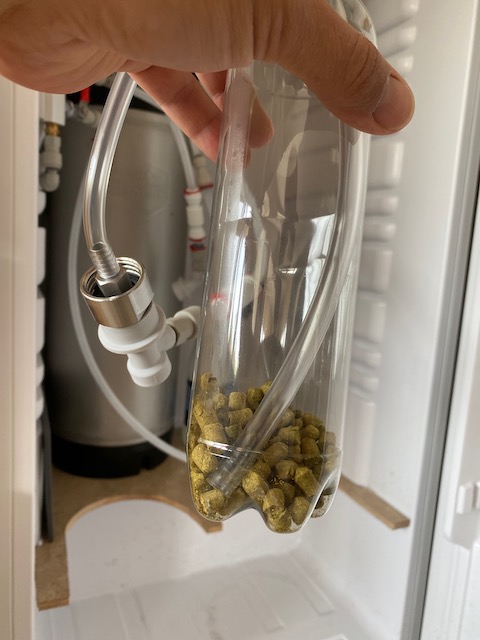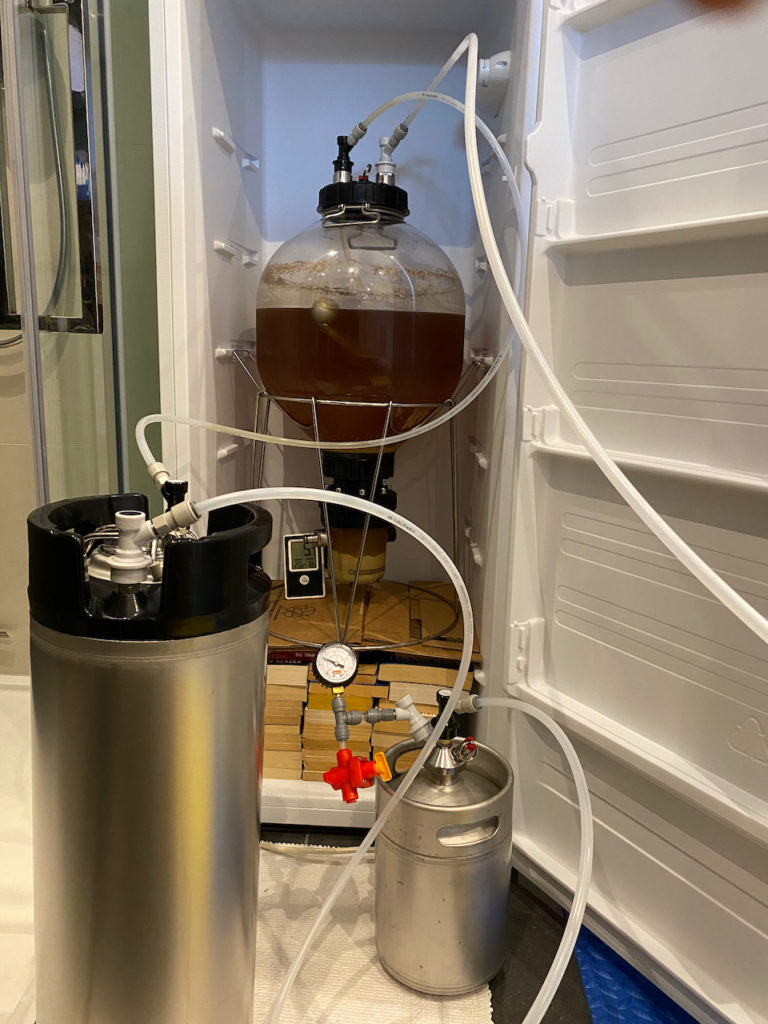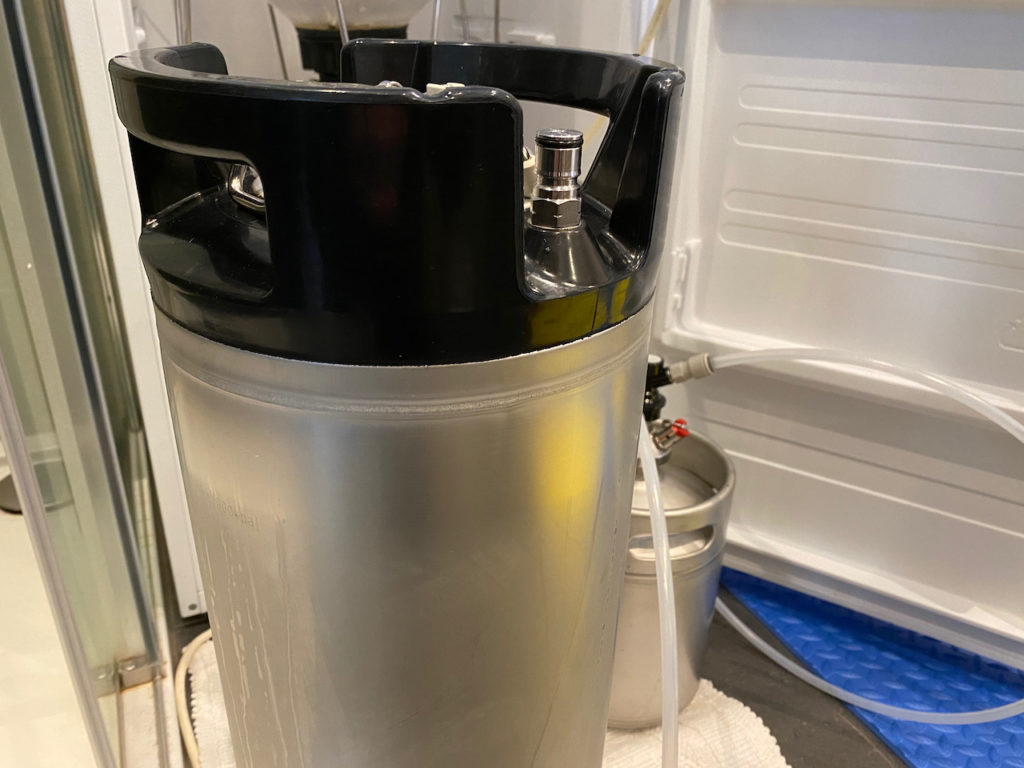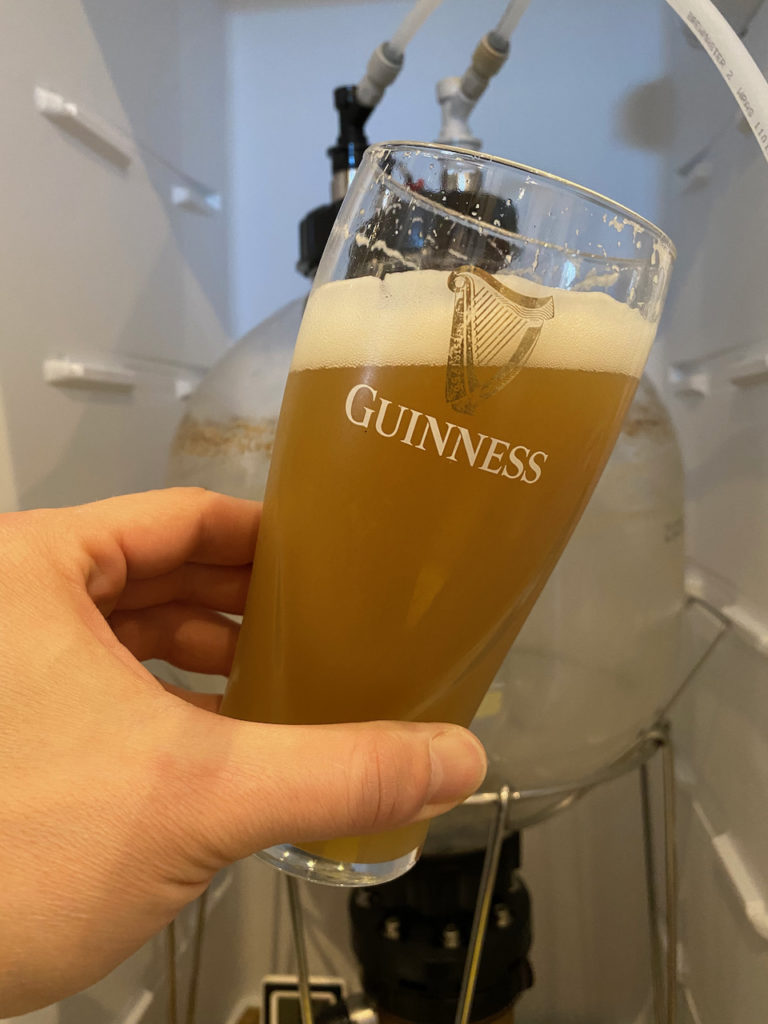Another new gizmo in my everlasting quest to cut diluted oxygen (DO) contamination, this is basically a ball valve fitted to the top of the FV with a plastic bottle on top of that. The idea is that you can place the dry hop pellets inside the bottle and purge it with CO2, then fit it to the top of the fermenter around the same time as transferring the wort from the kettle, where it’ll sit ready for oxygen-free deployment via the ball valve. More on that in a moment.
Although the valve had been sourced ages ago I didn’t use it on the last couple of brews because I hadn’t taken the time to find a suitable bottle – after all this has to fit inside the fermentation fridge along with my Fermzilla. When I did finally get my hands on two contenders I had already started fermenting my latest creation, and since it was now too late to remove the ball valve from the FV I had to find a way of fitting the sanitised, purged bottle of hops onto the ball valve without spilling the payload or letting in oxygen. For this reason I chose the larger of my two bottles, because it allowed me to fold it in half and trap the pellets in the bottom while screwing the bottle onto the ball valve. It worked after a fashion, but I’m not convinced that oxygen was eliminated as well as it could have been if I’d planned things properly, and purged the hops with the ball valve already fitted to the bottle right from the start.




The biggest scope for improvement however is the release process itself, because as soon as you open the ball valve a couple of pellets drop through and the rest get jammed. I had hoped to avoid this scenario by allowing the bottle to dry fully after sanitising it, but alas even dry pellets jammed up in the neck of the bottle and necessitated some aggressive agitation. I’m not happy with this arrangement and will see if I can come up with a way to improve things before my next attempt; perhaps a small auger inside the bottle, or a magnet on a stick, or an external vibrator? (oooh-err)
Maybe the answer is to simply crush the hop pellets down before putting them into the bottle so that they flow more readily as powder instead of getting stuck as pellets, but would this affect their potency while waiting to be deployed? Might be one to experiment…


